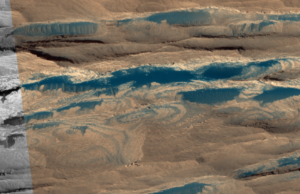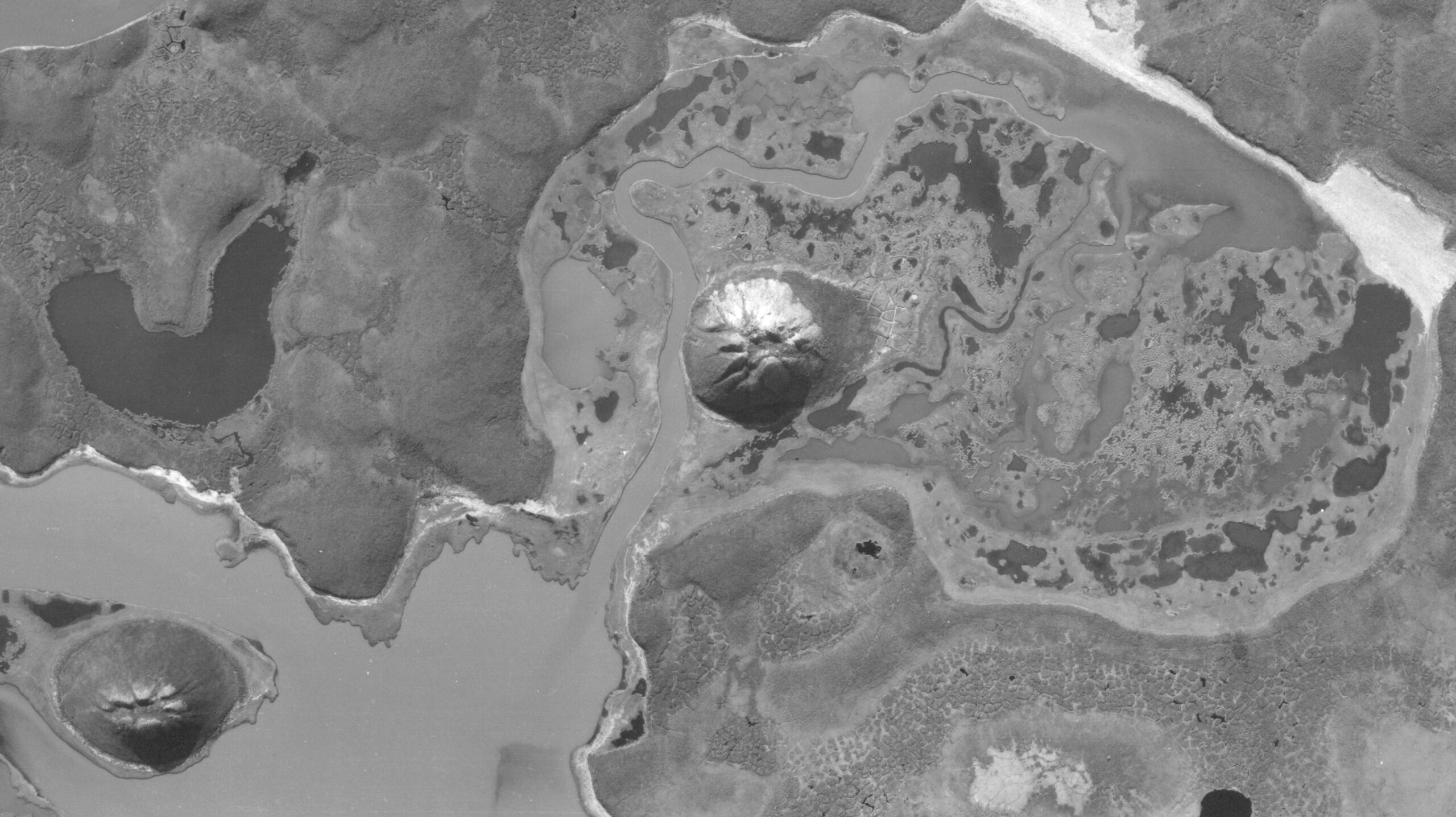We actively conduct research that primarily concerns the Earth, Mars, and Titan.
Source of sand on Mars?
Sand is virtually ubiquitous on Mars and has significant effects on the atmosphere and the surface of the planet. Martian sand is also moving through the force of the wind. The fast wind speeds required to move sand under the low-density atmosphere of present-day Mars impart significant kinetic energy, likely causing the sand grains to breakdown to sub-sand sizes. Yet the surface of Mars shows the continued presence of significant sand deposits. So what are the sources of this sand?
One long-standing hypothesis for the source of sand on Mars is as volcaniclastic sediments. The Medusae Fossae Formation is interpreted as type of volcaniclastic deposits, specifically an ignimbrite. We are analyzing spectra and images of sand in the western Medusae Fossae Formation to test the volcaniclastic hypothesis for an origin of Martian sand. Through comparison of morphological and compositional data of sand deposits in the western Medusae Fossae Formation and their multiple potential sand sources, we are working to discern the most likely source of sand in this region, and so contribute to understanding the source(s) of sand on Mars.

Sediment abrasion on Titan
Coarse, rounded sediment was imaged at the Huygens landing site on Titan and has also been inferred from the high radar backscatter of some fluvial features interpreted as braided riverbeds. Rounding occurs in terrestrial riverbeds due to abrasion processes at rates that are dependent on factors such as lithology. We simulate fluvial transport on Titan using a cryogenic roller mill, dubbed the Titan Tumbler to investigate how the breakdown of icy clasts at Titan’s 95 K compares to that of Earth’s silicate sediments. The radar return of fluvial features on Titan may also indicate downstream changes like we see on Earth (e.g., fining, rounding) and we use ground-truth of sediment properties at analogous sites on Earth to better interpret the radar backscatter for similar features imaged by Cassini.

